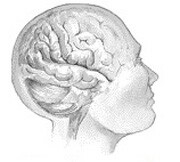Improvement in pain lasts during eight-year follow-up; however, new pain can develop during follow-up
MONDAY, March 23, 2015 (HealthDay News) — For patients with Parkinson’s disease, subthalamic nucleus deep brain stimulation (STN DBS) is associated with lasting improvement in pain, although new pain can develop during follow-up, according to a study published online March 23 in JAMA Neurology.
Yu Jin Jung, M.D., from Kyung Hee University in Seoul, South Korea, and colleagues examined the long-term effect of STN DBS on pain in 24 patients with Parkinson’s disease. Pain assessments were performed preoperatively and eight years after surgery.
The researchers found that 67 percent of the patients experienced pain at baseline when not taking medication (off-state). At eight years after surgery, all off-state pain at baseline improved or disappeared. At baseline, the number of body parts with pain was 21; at eight years after surgery, this decreased to 11. At baseline, the mean and median scores of the off-state pain were 6.2 and 7.0, respectively, and these improved to 3.5 and 2.5, respectively, at eight-years after surgery. During the eight-year follow-up, new pain developed in 75 percent of patients; the number of body parts with newly developed pain was 47 and the mean and median scores for new pain were 4.4 and 3.0, respectively. At eight years, the types of new pain were musculoskeletal, central, radiculoneuritic, and dystonic.
“Pain associated with Parkinson’s disease is improved by STN DBS, and the beneficial effect persists after a long-term follow-up of eight years,” the authors write.
Copyright © 2015 HealthDay. All rights reserved.








